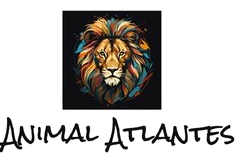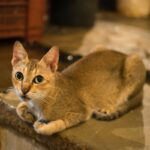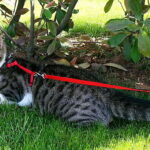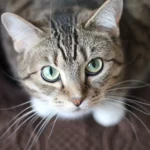American Shorthair, or ASH, is a domestic cat breed. The breed was introduced to the US to combat rats and other vermin and is thought to be descended from European cats.
American Shorthairs are a strong feline breed that comes in various coat colors and patterns and is particularly well known for their ability to mouse. These cats frequently have characteristic tabby coat patterns and the letter M on their foreheads; many are also tabby.
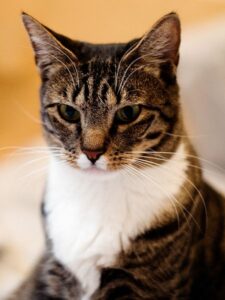
The Cat Fanciers’ Association recognized the American Shorthair among the first five registered cat breeds, and it is a national icon in the United States. Despite being a distinct breed, American Shorthair cats have a wide range of colors and patterns, greatly affecting their appearance.
Therefore, this piece will focus on examining the various American Shorthair cats. We shall also discuss its foundations to help us better grasp this breed.
American Shorthair: The Fundamental Facts
The American Shorthair is an adorable, robust, and well-liked domestic cat breed. The Cat Fanciers’ Association recognizes this breed, native to North America and Europe.
The American Shorthair is an American classic and one of the first five feline breeds registered by the Cat Fanciers’ Association. American Shorthairs, considered descended from ship cats, are favored due to their excellent health and longer lifespan. The basic characteristics of this cat breed are listed in the following table.
| American Shorthair | |
| Native to | Europe and North America |
| Fur type | Short, thick, and dense |
| Common color | White Black Orange Blue Grey Silver Beige Brown Shable |
| Coat patterns | Bi-color Solid Tabby Calico / tri-color |
| Height | Up to 10 inches |
| Weight | Up to 15 lbs |
| Lifespan (average) | Up to 20 years |
| Grooming needs | Medium- weekly brushing of the coat |
| Temperament | Docile, social, playful. bold |
| Physical characteristics | Short Robust, and athletic build Short coat Big eyes closer to each other Various coat colors and patterns |
| Prey drive | High |
| Lap cat | Yes |
| Trainability | Yes |
| Shedding | Not much |
| Vocal | Medium- when necessary |
| Smartness | High |
| Playfulness | Medium |
| As a pet | Suitable for families with multi pets |
Is My Cat a Genuine American Shorthair?
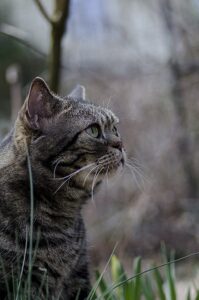
First-time cat owners often find it confusing to know if the cat they are looking at is an American Shorthair. So, the first question they search is how to know if a cat is an American Shorthair. Let us answer this for you.
Here are some ways by which you can identify a true American Shorthair cat.
Look at the cat’s physical traits
One of the best ways to identify an American Shorthair is by looking at its physical traits. Overall, these cats have a rounded appearance. In addition, their build is robust, and they look very compact. Yet, to be absolutely sure, look for the following traits.
- Broad chest
- Round face
- Large head
- Rounded cheeks
- Short and pointed ears
- Stout legs
- Muscular body
- The thick and dense coat
- The M mark on the forehead (if possess a tabby coat)
Feel the body
The next thing to do is feel the cat’s body. You can pick up the cat and pet it to feel it better. As a working cat breed, true American Shorthairs should be muscular. When touched, you can feel it. Look at the legs. They should be stout and shorter than average cats. These cats also feature a muscular torso, resulting in a thick neck and muscular limbs.
Notice the fur
This breed has short, dense fur, as the name would imply. Additionally, the fur is dense and has a low tendency to shed. Also, despite being dense, the fur is not very soft.
An American Shorthair will display a wide range of coat patterns and colors. Additionally, they can have tabby coats. So, to better understand this subject, become knowledgeable about tabby coats.
Select only respectable and registered breeders
Look exclusively for reputable and registered breeders if you want to get a purebred American Shorthair. Only a reputable breed would produce cats that were all of one breed rather than a mix of breeds. Additionally, you should request the cat’s pedigree records. The certificates proving the cat’s lineage are irrefutable evidence that it is a purebred American Shorthair.
Try a DNA test
Another reliable approach to validate the cat’s breed purity is through a DNA test. A DNA test is preferable to merely speculating based on traits and other characteristics, even though it may not be completely correct.
Is American Shorthair a Rare Breed?
American Shorthair’s history in the US dates back to the early 1900s. To combat vermin and rats, these cats were imported to the US. But is this a unique breed?
The American Shorthair cat breed is not particularly uncommon. Instead, it is currently one of the most prevalent and well-liked cat breeds in the US. Japan and Canada are other nations where this breed is most frequently encountered.
This breed is reportedly uncommon in European nations. There are several organizations there as well that even decline to acknowledge its existence.
What are the Different Coat Colors of American Shorthair Cats?
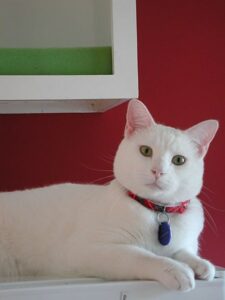
The Cat Fanciers’ Association has certified the first five breeds, including the American Shorthair, also known as an ASH. This sweet-natured feline breed comes in an array of colors and patterns.
Cats of the American Shorthair breed can have a variety of colors and coat patterns, making them a distinctive breed of cat. In reality, the CFA recognizes more than 80 different colors and patterns in ASH. For your information, the top types are listed below.
| Type | Coat Color | Nose and Paw Color | Eye Color | Special Marking(s) |
| White | Snow white with pink | Pink | Blue r golden | |
| Black | Pure black with a black | Black | Golden | |
| Blue | Blur tinge when looked closely | Blue | Golden | |
| Cream | Buff cream | Pink | Golden | No |
| Red | Deep brilliant red | Brick red | Golden | No |
| Tortoiseshell | Black with mixed patches of red shade. Also comes in a dilute tortoiseshell version. These cats appear more silver or blue due to their white undercoat. | Golden | ||
| Chinchilla Silver | Pure white undercoat. Black on head, tail, flanks, and back. Shading and tipping on legs. Chest, stomach, chin, and ear tufts are white. | Nose leather- red Pads- black | Green | |
| Blue Chinchilla Silver | Blue tipping. | Nose leather- old rose Paw pads- old rose or blue | Green | |
| Red Chinchilla | Red shading | Paw pads- rose pink | Golden | |
| Smoke | Light undercoat The overcoat can be blue-cream, black, blue, or red | Nose and Paw pads- Can range between black, blue, rose | Green, golden, or hazel | White markings on their legs, chest, stomach, and feet |
| Tabby | Multiple colors with striped patterns Common color- Silver tabby Other colors- brown, red, blue, cream, etc. | Classic, mackerel, or ticked Can also be white | ||
| Patched Tabby | Common color- blue, silver, or brown Patches- red or cream | Vary depending on the coat color | White (usually) | |
| Calico | White with black and red patches May or may not have tabby stripes Diluted calico- white with blue and cream patches | Golden | ||
| Blue Cream | Blue coat with cream patch | Blue or pink | Golden |
Summary
The topic of distinct varieties of American Shorthair cats is now complete. First, look for ASH if you want to find purebred shorthair cats. Roughly 80 different coat hues and patterns are seen in these cats. They are attractive and well-built. Furthermore, this breed is also versatile, friendly, and trainable.
